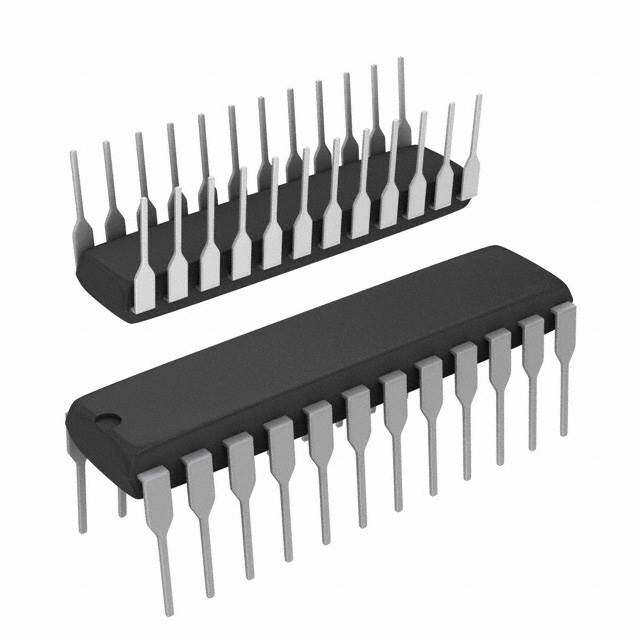ICGOO在线商城 > 集成电路(IC) > 接口 - 驱动器,接收器,收发器 > LT1796CS8#PBF
- 型号: LT1796CS8#PBF
- 制造商: LINEAR TECHNOLOGY
- 库位|库存: xxxx|xxxx
- 要求:
| 数量阶梯 | 香港交货 | 国内含税 |
| +xxxx | $xxxx | ¥xxxx |
查看当月历史价格
查看今年历史价格
LT1796CS8#PBF产品简介:
ICGOO电子元器件商城为您提供LT1796CS8#PBF由LINEAR TECHNOLOGY设计生产,在icgoo商城现货销售,并且可以通过原厂、代理商等渠道进行代购。 LT1796CS8#PBF价格参考。LINEAR TECHNOLOGYLT1796CS8#PBF封装/规格:接口 - 驱动器,接收器,收发器, 半 收发器 1/1 CANbus 8-SOIC。您可以下载LT1796CS8#PBF参考资料、Datasheet数据手册功能说明书,资料中有LT1796CS8#PBF 详细功能的应用电路图电压和使用方法及教程。
| 参数 | 数值 |
| 产品目录 | 集成电路 (IC) |
| 描述 | IC CAN TXRX VOLT FAULT PROT8SOIC |
| 产品分类 | |
| 品牌 | Linear Technology |
| 数据手册 | http://www.linear.com/docs/1756 |
| 产品图片 |
|
| 产品型号 | LT1796CS8#PBF |
| rohs | 无铅 / 符合限制有害物质指令(RoHS)规范要求 |
| 产品系列 | - |
| 产品目录页面 | |
| 供应商器件封装 | 8-SOIC |
| 其它名称 | LT1796CS8PBF |
| 包装 | 管件 |
| 协议 | CAN |
| 双工 | 半 |
| 安装类型 | 表面贴装 |
| 封装/外壳 | 8-SOIC(0.154",3.90mm 宽) |
| 工作温度 | 0°C ~ 70°C |
| 接收器滞后 | 70mV |
| 数据速率 | 125kbps |
| 标准包装 | 100 |
| 电压-电源 | 4.75 V ~ 5.25 V |
| 类型 | 收发器 |
| 驱动器/接收器数 | 1/1 |






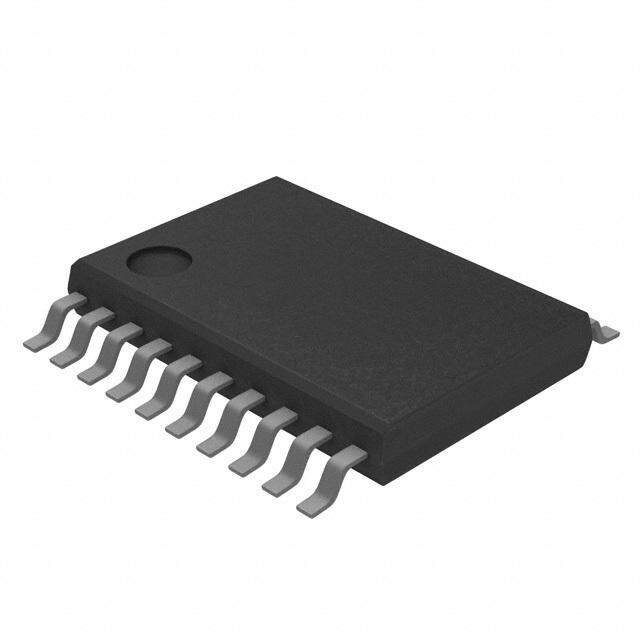
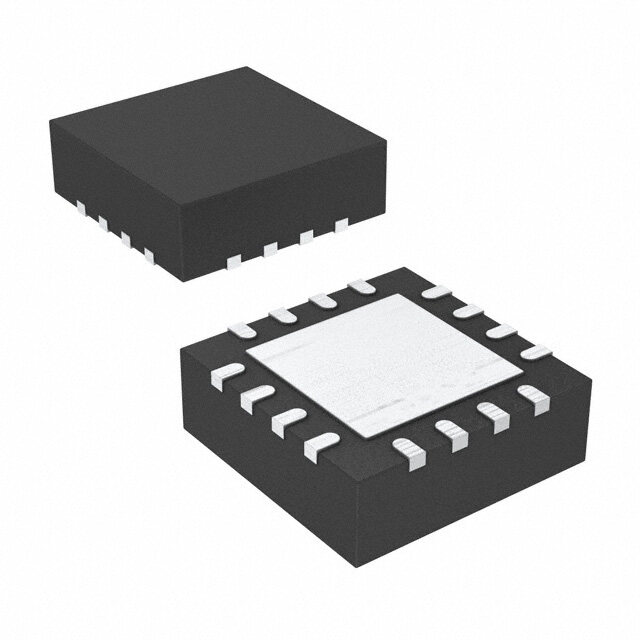

- 商务部:美国ITC正式对集成电路等产品启动337调查
- 曝三星4nm工艺存在良率问题 高通将骁龙8 Gen1或转产台积电
- 太阳诱电将投资9.5亿元在常州建新厂生产MLCC 预计2023年完工
- 英特尔发布欧洲新工厂建设计划 深化IDM 2.0 战略
- 台积电先进制程称霸业界 有大客户加持明年业绩稳了
- 达到5530亿美元!SIA预计今年全球半导体销售额将创下新高
- 英特尔拟将自动驾驶子公司Mobileye上市 估值或超500亿美元
- 三星加码芯片和SET,合并消费电子和移动部门,撤换高东真等 CEO
- 三星电子宣布重大人事变动 还合并消费电子和移动部门
- 海关总署:前11个月进口集成电路产品价值2.52万亿元 增长14.8%
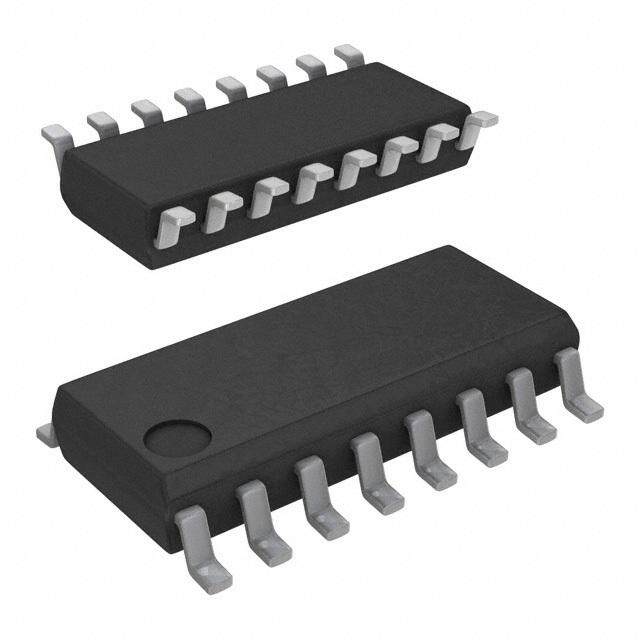
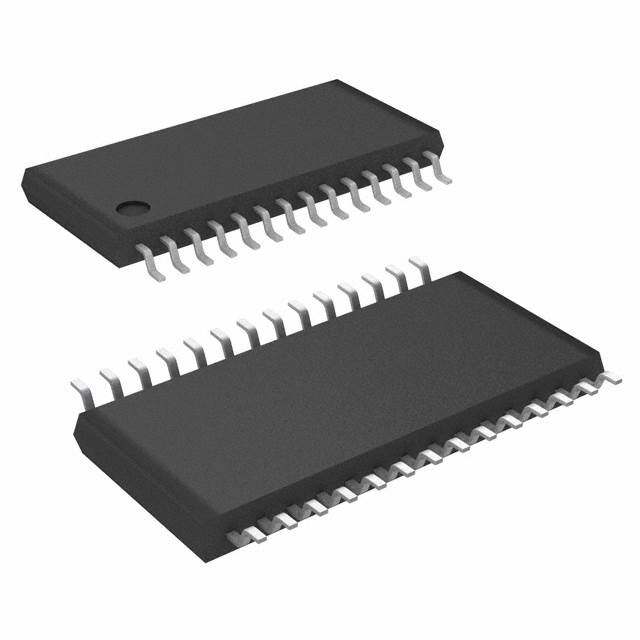




PDF Datasheet 数据手册内容提取
LT1796 Overvoltage Fault Protected CAN Transceiver FeaTures DescripTion n Protected from Overvoltage Line Faults to ±60V The LT®1796 CAN transceiver provides built-in fault toler- n ESD Protection to IEC-1000-4-2 Level 4 ance to survive in industrial and automotive environments. ±15kV Air Gap Test Discrete protection devices are not needed. Bus interface ±8kV Contact Mode Test pins can withstand voltage faults up to ±60V with respect n ISO 11898 Compatible to ground with no damage to the device. Faults may oc- n High Input Impedance Supports Up to 256 Nodes cur while the transceiver is active, shut down or powered n Controlled Slew Rates for EMI Emissions Control off. On-chip ESD protection withstands up to ±15kV air n High Impedance Outputs When Off or discharges and ±8kV contact mode discharges tested per Powered Down IEC-1000-4-2. Loss of power or ground connections does n Short-Circuit Protection On All Outputs not damage the IC. n Thermal Shutdown Protection The circuit operates with data rates up to 125kbaud. A n Pin Compatible with Philips PCA82C251 slew control pin allows control of transmitted data pulse edges to control EMI and reflection problems on imper- fectly terminated lines. High output current drive allows applicaTions the use of inexpensive PVC cable with impedance as low as 72Ω. The 100kΩ input impedance allows up to 256 n Industrial Control Data Networks transceivers per data network. n Automotive Systems The LT1796 is available in 8-lead PDIP and SO packages. n HVAC Controls L, LT, LTC, LTM, Linear Technology and the Linear logo are registered trademarks of Linear Technology Corporation. All other trademarks are the property of their respective owners. Typical applicaTion Fault Protected CAN Bus Network RT RT 120Ω 120Ω 125kbps CANH and CANL Driver Output 5V 5V 0.1µF 0.1µF CANH-CANL 2V/DIV LT1796 LT1796 CANH 7 7 2V/DIV TXD 1 D D 1 TXD CANH 2V/DIV 6 6 4 4 TXD IN RXD R R RXD 5V/DIV 5 5 VREF VREF 1796 TA02 5V/DIV GND RS RS GND 1796 TA01 2 8 8 2 1796fa 1 For more information www.linear.com/LT1796
LT1796 absoluTe MaxiMuM raTings pin conFiguraTion (Note 1) Supply Voltage (V ) ............................................... 44V CC TOP VIEW R Slope Control Input Voltage ................. –0.3V to 44V S V Reference Output Pin .......................... –0.3V to 7V TXD 1 8 RS REF D GND 2 7 CANH Driver Input Voltage .................................. –0.3V to 44V CANH, CANL Data Line Pins....................... –80V to 80V VCC 3 R 6 CANL Receiver Output Voltages .............................–0.3V to 7V RXD 4 5 VREF Operating Temperature Range N8 PACKAGE S8 PACKAGE 8-LEAD PDIP8-LEAD PLASTIC SO LT1796C...................................................0°C to 70°C TJMAX = 150°C, θJA = 130°C/W (N8) LT1796I ...............................................–40°C to 85°C TJMAX = 150°C, θJA = 150°C/W (S8) Storage Temperature Range ..................–65°C to 150°C Lead Temperature (Soldering, 10 sec) ...................300°C orDer inForMaTion LEAD FREE FINISH TAPE AND REEL PART MARKING* PACKAGE DESCRIPTION TEMPERATURE RANGE LT1796CN8#PBF LT1796CN8#TRPBF LT1796 CN8 8-Lead PDIP 0°C to 70°C LT1796CS8#PBF LT1796CS8#TRPBF 1796 8-Lead Plastic SO 0°C to 70°C LT1796IN8#PBF LT1796IN8#TRPBF LT1796I IN8 8-Lead PDIP –40°C to 85°C LT1796IS8#PBF LT1796IS8#TRPBF 1796I 8-Lead Plastic SO –40°C to 85°C Consult LTC Marketing for parts specified with wider operating temperature ranges. *The temperature grade is identified by a label on the shipping container. Consult LTC Marketing for information on nonstandard lead based finish parts. For more information on lead free part marking, go to: http://www.linear.com/leadfree/ For more information on tape and reel specifications, go to: http://www.linear.com/tapeandreel/ elecTrical characTerisTics The l denotes the specifications which apply over the full operating temperature range, otherwise specifications are at T = 25°C. V = 4.75V to 5.25V, V = 0V unless otherwise noted. A CC RS SYMBOL PARAMETER CONDITIONS MIN TYP MAX UNITS V CANH Output Voltage V = 0V, No Load ● 3.8 4.4 5.0 V CANH TXD V = 0V, R = 60Ω ● 2.8 3.5 4.6 V TXD L V CANL Output Voltage V = 0V, No Load ● 0 0.5 0.9 V CANL TXD V = 0V, R = 60Ω ● 0 1.3 1.6 V TXD L V Dominant State Differential Output Voltage V = 0V, No Load, V = 4.75V ● 3.0 3.6 5.0 V OD TXD CC V = 0V, R = 60Ω, V = 4.75V ● 1.5 2.0 4.2 V TXD L CC V = 0V, R = 36Ω, V = 4.75V ● 1.2 1.7 4.2 V TXD L CC V Recessive State Differential Output Voltage V = 5V, R = 60Ω ● –10 0 10 mV REC TXD L V Recessive State Common Mode Output Voltage V = 5V, R = 60Ω, V = 5V ● 2.7 3 3.5 V CMR TXD L CC 1796fa 2 For more information www.linear.com/LT1796
LT1796 elecTrical characTerisTics The l denotes the specifications which apply over the full operating temperature range, otherwise specifications are at T = 25°C. V = 4.75V to 5.25V, V = 0V unless otherwise noted. A CC RS SYMBOL PARAMETER CONDITIONS MIN TYP MAX UNITS V Dominant State Common Mode Output Voltage R = 60Ω, V = 5V ● 2 2.5 3 V CMD L CC V TXD Input High Voltage ● 2.8 V IH V TXD Input Low Voltage ● 2 V IL I TXD Input Current 0 < V < V ● –5 5 µA IN1 TXD CC I CANH Short-Circuit Current, Dominant Mode V = 0V, V = 5.25V ● –250 –60 mA SCH CANH CC V = –36V, V = 5.25V ● –10 –1 0 mA CANH CC V = –60V, V = 5.25V ● –10 –1 0 mA CANH CC V = 60V, V = 5.25V ● 0 1 10 mA CANH CC I CANL Short-Circuit Current, Dominant Mode V = 5V, V = 0V, V = 5.25V ● 60 250 mA SCL CANL TXD CC V = 36V, V = 0V, V = 5.25V ● 0 1 10 mA CANL TXD CC V = 60V, V = 0V, V = 5.25V ● 0 1 10 mA CANL TXD CC V = –60V, V = 0V, V = 5.25V ● –10 –1 0 mA CANL TXD CC R Differential Input Resistance V = 5V, –7V < V , V < 12V ● 140 240 350 kΩ IND TXD CANH CANL CANH, CANL Input Resistance V = 5V, –7V < V , V < 12V ● 70 120 175 kΩ TXD CANH CANL Input Fault Current (CANH, CANL) V = 5V, –60V < V , V < 60V ● –3 3 mA RS CANH CANL V = 5V, –60V < V , V < 60V ● –3 3 mA TXD CANH CANL V = 0V, –60V < V , V < 60V ● –3 3 mA CC CANH CANL Dc elecTrical characTerisTics The l denotes the specifications which apply over the full operating temperature range, otherwise specifications are at T = 25°C. V = 4.75V to 5.25V, V = 0V unless otherwise noted. A CC RS SYMBOL PARAMETER CONDITIONS MIN TYP MAX UNITS V Differential Input Threshold Voltage V = 0V, –7V < V < 12V l 0.5 0.9 V TH RS CM for Receiver V = 5V, –7V < V < 12V l 0.5 0.9 V RS CM ∆V Receiver Input Hysteresis –7V < V < 12V 70 mV TH CM V Receiver Output High Voltage V = 4.75V, I = –400µA, V = 500mV l 3 3.6 V OH CC O ID V Receiver Output Low Voltage V = 4.75V, I = 1.6mA, V = 900mV l 0.15 0.4 V OL CC O ID I Receiver Short-Circuit Current 0V < V < V , V = 5.25V l 7 20 85 mA SCR O CC CC V Reference Output Voltage –100µA < I < 100µA l 2.25 2.5 2.7 V REF REF V Reference Output Short-Circuit Current 0 < V < V l –20 20 mA REFSC REF CC V R Pin Standby Threshold V = 5V l 2.5 2.8 4 V RSSB S CC I R Input Current V = 5V, V = 5V l –270 0.1 10 µA RS S RS CC V = 0V, V = 5V l –90 –200 –140 µA RS CC R = 47k, V = 5V l –60 –40 µA S CC I Supply Current Dominant No Load, V = 0V, V = 0V, V = 5.25V l 4.3 7 mA CC RS TXD CC Recessive R = 60Ω, V = 0V, V = 5V, V = 5.25V l 3.8 7 mA L RS TXD CC Standby R = 60Ω, V = 5V, V = 5.25V l 0.8 1.5 mA L RS CC 1796fa 3 For more information www.linear.com/LT1796
LT1796 swiTching characTerisTics The l denotes the specifications which apply over the full operating temperature range. V = 0V unless otherwise noted. (Note 2) RS SYMBOL PARAMETER CONDITIONS MIN TYP MAX UNITS t Minimum Bit Time (Note 3) l 8 µs BIT F Maximum Data Rate (Note 3) l 125 kbps MAX t Driver Input to Bus Active Figures 1, 2 R = 0k l 300 500 ns TXDON S R = 47k l 350 1000 ns S t Driver Input to Bus Inactive Figures 1, 2 R = 0k l 500 1200 ns TXDOFF S R = 47k l 600 1500 ns S t Loopback Delay Active Figures 1, 3 l 0.6 1.5 µs LBON t Loopback Delay Inactive Figures 1, 3 l 1.5 3 µs LBOFF t Receiver Delay Off Figures 1, 4 l 400 600 ns RXDOFF t Receiver Delay On Figures 1, 4 l 300 600 ns RXDON t Receiver Delay Off, Standby V = 4V, Figures 1, 4 l 1.5 4 µs RXDOFFSB RS t Receiver Delay On, Standby V = 4V, Figures 1, 4 l 1 4 µs RXDONSB RS t Wake-Up Delay from Standby Figures 1, 5 l 1 15 µs WAKE SR+ Positive Slew Rate R = 0k l 5 12 65 V/µs S R = 47k l 2 7 30 V/µs S SR– Negative Slew Rate R = 0k l 5 36 65 V/µs S R = 47k l 2 5 15 V/µs S Note 1: Stresses beyond those listed under Absolute Maximum Ratings Note 2: Unless otherwise specified, testing done at V = 5V, T = 25°C. CC A may cause permanent damage to the device. Exposure to any Absolute Note 3: Bit time and data rate specifications are guaranteed by driver and Maximum Rating condition for extended periods may affect device receiver delay time measurements. reliability and lifetime. Typical perForMance characTerisTics Dominant State Bus Voltage Supply Current vs Data Rate vs R Transmitting, 50% Duty Cycle L 3.0 24 TA = 25°C TA = 25°C 2.5 A) 23 m 2.0 T ( N V) RE V (OD 1.5 Y CUR 22 L 1.0 PP U S 21 0.5 0 20 0 50 100 150 200 250 0 50 100 150 200 250 RL (Ω) DATA RATE (Kbps) 1796 G01 1796 G03 1796fa 4 For more information www.linear.com/LT1796
LT1796 Typical perForMance characTerisTics RS Pin Current vs RS Positive Slew Rate vs RS Negative Slew Rate vs RS 250 15 40 TA = 25°C TA = 25°C TA = 25°C T (µA) 200 30 EN 10 R TROL CUR 115000 +SR (V/µs) –SR (V/s) 20 N O 5 C W 10 E L 50 S 0 0 0 0 20 40 60 80 0 20 40 60 80 0 20 40 60 80 RS (kΩ) RS (kΩ) RS (kΩ) 1796 G04 1796 G05 1796 G06 Transmitter Propagation Delay vs CANH Short-Circuit Current vs CANL Short-Circuit Current vs Temperature Voltage Voltage 700 20 90 TA = 25°C TA = 25°C 80 600 0 70 ns)500 –20 60 (N AND tXDOFFTXDO432000000 tTXDOFF tTXDON I (mA)SC–––468000 I (mA)SC 54320000 tT 10 100 –100 0 0 –120 –10 –50 –25 0 25 50 75 100 –60 –40 –20 0 20 40 60 –60 –40 –20 0 20 40 60 TEMPERATURE (°C) VCANH (V) VCANL (V) 1796 G07 1796 G08 1796 G09 Receiver Thresholds vs Receiver Propagation Delay vs Temperature Temperature 0.80 400 0.75 s) 350 VTH RISING (nON tRXDOFF D V) RX (H0.70 D t 300 VT AN VTH FALLING DOFF tRXDON X 0.65 tR250 0.60 200 –50 –25 0 25 50 75 100 –50 –25 0 25 50 75 100 TEMPERATURE (°C) TEMPERATURE (°C) 1796 G10 1796 G11 1796fa 5 For more information www.linear.com/LT1796
LT1796 pin FuncTions TXD (Pin 1): Driver Input. Logic-level thresholds are set CANL (Pin 6): CAN Bus Low Data Line. The CANL pin is by V . A logic input level higher than V turns the one input to the receiver and the low driver output. In the REF REF driver outputs off, releasing control of the CANH and dominant state (TXD low), the driver pulls the CANL pin CANL lines. A logic input less than V turns the driver to within 1V of GND. In the recessive state (TXD high), REF outputs on, pulling CANH high and CANL low. An open the driver output stays high impedance. The CANL pin is TXD input will float high, turning the driver outputs off. protected from voltage faults from –60V to 60V in domi- The TXD input pin can withstand voltages from –0.3V to nant, recessive, standby or powered off modes. On-chip 44V with no damage. ESD protection meets IEC-1000-4-2 levels. GND (Pin 2): Ground. CANH (Pin 7): CAN Bus High Data Line. The CANH pin is one input to the receiver and the high driver output. In V (Pin 3): Positive Supply Input. Normal operation is CC the dominant state (TXD low), the driver pulls the CANH with a 4.75V to 5.25V supply. Operation with supplies up pin to within 1V of V . In the recessive state (TXD high), to 44V is possible with unterminated bus lines. Operation CC the driver output stays high impedance. The CANH pin is at high voltages with normally terminated busses will protected from voltage faults from –60V to 60V in domi- result in excessive power dissipation and activation of the nant, recessive, standby or powered off modes. On-chip thermal shutdown circuit. V should be decoupled with CC ESD protection meets IEC-1000-4-2 levels. a 0.1µF low ESR capacitor placed as close to the supply pin as possible. R (Pin 8): Slope Control. This pin is a multifunction S control pin. When R is high (V > 4V), the circuit goes RXD (Pin 4): Receiver TTL Level-Logic Output. A high level S RS into a low power standby mode. In standby, the driver output indicates a recessive state (zero-volt differential) always stays in a high impedance (recessive) state. The bus. A dominant state forces a low receiver output. receiver operates in a low power (slow) monitoring mode. VREF (Pin 5): Reference Output. The reference voltage sets Received data may be used to “wake-up” the system to full the TXD input threshold and the recessive bus common functionality. Full speed normal operation occurs if R is S mode voltage at CANH and CANL. VREF is approximately tied low through a resistance of less than 3k. The current VCC/2 for low voltage operation. When VCC > 7.5V, VREF out of RS will be limited to about 500µA in the low state. maintains a 3.5V level. Controlling the current out of R with a resistor greater S than 3k or by using a current source allows slew rate control of the data output onto CANH and CANL. 1796fa 6 For more information www.linear.com/LT1796
LT1796 block DiagraM TesT circuiT VCC 5V 3 0.1µF 3 TXD 1 DRIVER 1 7 TXD CANH 60Ω 100pF RS 8 SSTLAONPDEB/Y 4 RXD CANL 6 7 CANH RXD 4 RX 6 CANL 30pF GNDVREF RS VREF 5 RVEFOELRTAEGNECE 2 5 8 RS 1796 F01 2 1796 BD GND Figure 1. Switching Test Circuit TiMing DiagraM 5V 5V TXD 2.5V 2.5V TXD 2.5V 2.5V 0V 0V VDIFF = VCANH – VCANL VDIFFHI VDIFF 50% RXD 2V 25% 0.8V VDIFFLO 0V tTXDOFF tTXDON 1796 F02 tLBOFF tLBON 1796 F03 Figure 2. Driver Delay Waveforms Figure 3. Loopback Delay Waveforms 3.5V 5V CANH 3V 3V RS 2.5V 2.5V 0V CANL = 2.5V 2V RXD RXD 0.8V 0.8V tWAKE 1796 F05 tRXDON tRXDOFF 1796 F04 Figure 4. Receiver Delay Waveforms Figure 5. Wake Up from Standby Waveforms FuncTion Tables Driver Output Receiver Output INPUTS BUS TERMINALS BUS VOLTAGE R RXD RESPONSE TIME S V = V – V TXD R CANH CANL OPERATING STATE BUS CANH CANL S V < 0.5V <3V High Fast 0 V < 3V High Low Dominant BUS RS 0.5V ≤ V ≤ 0.9V <3V Indeterminate Fast 0 V > 4V Hi-Z Hi-Z Standby BUS RS V > 0.9V <3V Low Fast 1 V < 3V Hi-Z Hi-Z Recessive BUS RS V < 0.5V >4V High Slow 1 V > 4V Hi-Z Hi-Z Standby BUS RS 0.5V ≤ V ≤ 0.9V >4V Indeterminate Slow BUS V > 0.9V >4V Low Slow BUS 1796fa 7 For more information www.linear.com/LT1796
LT1796 package DescripTion Please refer to http://www.linear.com/designtools/packaging/ for the most recent package drawings. N Package 8-Lead PDIP (Narrow .300 Inch) (Reference LTC DWG # 05-08-1510 Rev I) .400* (10.160) MAX 8 7 6 5 .255 ±.015* (6.477 ±0.381) 1 2 3 4 .300 – .325 .045 – .065 .130 ±.005 (7.620 – 8.255) (1.143 – 1.651) (3.302 ±0.127) .065 (1.651) .008 – .015 TYP (0.203 – 0.381) .120 (3.048) .020 (8..322555+–+–00..00..8331885591) (.21.0504) (0..041587 ±±.00.M0037IN6) (0NM.85 RI0ENV8 I )0711 BSC NOTE: INCHES 1. DIMENSIONS ARE MILLIMETERS *THESE DIMENSIONS DO NOT INCLUDE MOLD FLASH OR PROTRUSIONS. MOLD FLASH OR PROTRUSIONS SHALL NOT EXCEED .010 INCH (0.254mm) S8 Package 8-Lead Plastic Small Outline (Narrow .150 Inch) (Reference LTC DWG # 05-08-1610 Rev G) .189 – .197 .045 ±.005 (4.801 – 5.004) .050 BSC NOTE 3 8 7 6 5 .245 MIN .160 ±.005 .150 – .157 .228 – .244 (3.810 – 3.988) (5.791 – 6.197) NOTE 3 .030 ±.005 TYP 1 2 3 4 RECOMMENDED SOLDER PAD LAYOUT .010 – .020 × 45° .053 – .069 (0.254 – 0.508) (1.346 – 1.752) .004 – .010 .008 – .010 (0.203 – 0.254) 0°– 8° TYP (0.101 – 0.254) .016 – .050 .014 – .019 .050 (0.406 – 1.270) (0.355 – 0.483) (1.270) NOTE: INCHES TYP BSC 1. DIMENSIONS IN (MILLIMETERS) 2. DRAWING NOT TO SCALE 3. THESE DIMENSIONS DO NOT INCLUDE MOLD FLASH OR PROTRUSIONS. MOLD FLASH OR PROTRUSIONS SHALL NOT EXCEED .006" (0.15mm) SO8 REV G 0212 4. PIN 1 CAN BE BEVEL EDGE OR A DIMPLE 1796fa 8 For more information www.linear.com/LT1796
LT1796 revision hisTory REV DATE DESCRIPTION PAGE NUMBER A 8/15 Increased t max limit 4 TXDOFF 1796fa Information furnished by Linear Technology Corporation is believed to be accurate and reliable. 9 However, no responsibility is assumed for its use. Linear Technology Corporation makes no representa- tion that the interconnecFtioorn mof oitrse c iirncfuoitrsm asa dtieosncr wibewdw h.elrineiena wr.icll onmot /inLTfr1in7g9e 6on existing patent rights.
LT1796 Typical applicaTion Low EMI, Slew Limited CANBUS Network RT RT 120Ω 120Ω 5V 5V 0.1μF 0.1μF 3 3 LT1796 LT1796 7 7 1 1 TXD D D TXD 6 6 4 4 RXD R R RXD 5 5 VREF VREF GND RS RS GND 1796 TA03 2 8 8 2 47k 47k relaTeD parTs PART NUMBER DESCRIPTION COMMENTS LTC485 Low Power RS485 Interface Transceiver I = 300µA Typ CC LTC491 Differential Driver and Receiver Pair I = 300µA Typ CC LTC1483 Ultralow Power RS485 Low EMI Transceiver Controlled Driver Slew Rate LTC1485 RS485 Differential Bus Transceiver 10Mbaud Operation LTC1487 Ultralow Power RS485 with Low EMI, Shutdown and High Input Impedance Up to 256 Transceivers On the Bus LT1785/LT1791 60V Fault-Protected RS485/RS422 Transceivers 15kV ESD Protected LTC2875 ±60V CAN Transceiver 3.3V or 5V Supply, 4Mbps Operation, 25kV ESD 1796fa 10 Linear Technology Corporation LT 0815 REV A • PRINTED IN USA 1630 McCarthy Blvd., Milpitas, CA 95035-7417 For more information www.linear.com/LT1796 (408) 432-1900 ● FAX: (408) 434-0507 ● www.linear.com/LT1796 LINEAR TECHNOLOGY CORPORATION 2001
Mouser Electronics Authorized Distributor Click to View Pricing, Inventory, Delivery & Lifecycle Information: A nalog Devices Inc.: LT1796IS8#TR LT1796IN8 LT1796CS8#TR LT1796IN8#PBF LT1796CS8#TRPBF LT1796IS8 LT1796CN8#PBF LT1796IS8#TRPBF LT1796IS8#PBF LT1796CN8 LT1796CS8#PBF LT1796CS8

 Datasheet下载
Datasheet下载
